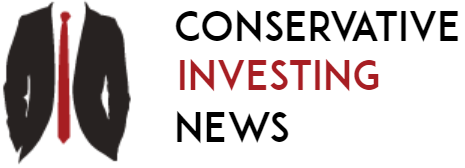President Trump is promising that his April 2 “Liberation Day” volley of tariffs will “make America wealthy again” by repatriating manufacturing jobs and reviving demand for American-made products. But many economists are taking a different view, warning that the tariffs could lead to more dire economic scenarios, including a recession or stagflation.
Mr. Trump has said the two new tariffs he unveiled yesterday — a 10% universal duty on all U.S. imports and so-called reciprocal tariffs applied to imports from 90 nations — will revitalize American manufacturing, create jobs and generate federal revenue.
But economists are ringing alarm bells as they digest the impact of the wide-ranging tariffs, which they forecast will accelerate inflation and dampen U.S. economic growth. That’s because Mr. Trump’s tariffs will be paid by U.S. businesses that import goods and materials from other countries, and they are likely to pass on some or all of those costs to consumers through higher prices.
As a result, experts say, inflation is likely to reignite, which could cause some U.S. households to back on spending. Because consumer spending accounts for about 70 cents of every $1 in GDP, economic growth could slow.
Together, those outcomes could create “stagflation,” a mashup of “stagnation” and “inflation” that describes periods when economic growth falters even as prices remain painfully high.
The risks of recession — a downturn that includes at least two consecutive quarters of negative growth in the nation’s gross domestic product — are also rising due to Mr. Trump’s latest tariffs, according to new estimates from several Wall Street economists.
If the fresh U.S. tariffs spur retaliatory measures from other nations, “serious recessions” could emerge both in the U.S. and globally, Mark Zandi, chief economist at Moody’s Analytics, said in an email to CBS MoneyWatch. A U.S. recession would likely reduce GDP by 2% and boost unemployment next year to 7.5%, up from its current rate of 4.1%, he estimated.
Still, for now that scenario remains unlikely, with Zandi assigning it a 15% probability. If the Trump administration drops some tariffs and offers exemptions for some products or nations, a recession would be more mild, with unemployment topping out at 5.5%, he added. Zandi said he is giving a 35% probability to this outcome.
To be sure, while many economists are raising the likelihood of a recession, they also say the economy remains relatively strong, with low unemployment and steady growth. Much depends on whether the Trump administration sticks with its tariffs or eases up on some policies.
Brace for higher inflation
More certain is that Mr. Trump’s tariffs will boost inflation, noted Gregory Daco, chief economist at EY. Consumer prices could accelerate by 1 percentage point by year-end, he added, which would boost the inflation rate close to 4% from its current level.
That could prove painful for many Americans, including for supporters of Mr. Trump who backed his candidacy because of his promises to “end the inflation nightmare” of the post-pandemic years. According to a recent CBS News poll, most Americans said the president has focused too much on tariffs, which they fear could end up raising prices, and not enough on lowering consumer costs.
A hike in inflation from Mr. Trump’s latest round of tariffs could add $1,000 in annual costs for low-income households, Daco estimated. Products ranging from Apple’s iPhones, which are largely manufactured in China, to clothing made in Vietnam could spike in price due to the reciprocal tariffs, with those nations facing rates of 34% and 46%, respectively.
“With the most significant tariff increases targeting countries central to the U.S. supply chain for consumer goods — China, Vietnam, Taiwan and Cambodia — households should expect higher prices across a wide range of everyday items,” said Seema Shah, chief global strategist at Principal Asset Management.
Here’s what other top economists are predicting
Oxford Economics: “[T]he announced tariffs will significantly raise the effective U.S. tariff rate to slightly less than 30%, matching levels not seen since the 1930s …. Oxford Economics’ Global Economic Model [forecasts] U.S. GDP growth at 1.4% and core inflation rising to 3.9% this year.” —Ryan Sweet, chief U.S. economist
PNC Financial Services: “The U.S. economy is in good shape at the start of the second quarter, but the ongoing trade war has increased the risk of near-term recession dramatically.” —Economist Ershang Liang
Nationwide: “[W]e revise down our real GDP growth estimate to a range of zero –0.5% Q4/Q4 2025 (previously we forecast 1% – 1.5% growth, while significant retaliation by our trading partners could tip GDP growth negative and result in a recession.” —Chief economist Kathy Bostjancic
Capital Economics: “[W]e see U.S. GDP growth slowing to around 1.5% annualized, but the risks are to the downside and we would put the odds of a recession at about 30%. U.S. CPI inflation now looks set to jump to around 4.5% later this year.” —Its global economics team
Deutsche Bank: “[T]hese actions could potentially shave 1 – 1.5 [percentage points] from growth this year and add a broadly similar amount to core PCE inflation …. Recession risks will likely rise materially if these tariffs are sustained.” —Economics team
Morningstar: “The tariff hikes announced April 2, if maintained, represent a self-inflicted economic catastrophe for the U.S. …. We haven’t yet published a full update, but we’ll likely be reducing our U.S. real GDP growth forecast for 2025 and 2026. The upward impact on inflation will likely be of a similar magnitude.” —Chief US economist Preston Caldwell
